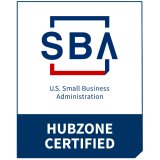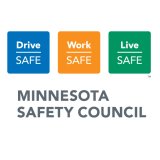New Guideline - Ototoxic Chemicals
 The hazardous effects of noise are well known, and most companies now have active hearing conservation programs to protect their workers. Less understood are the effects of "ototoxicants" (ear poisons). These chemicals or compounds can cause hearing loss, tinnitus and balance problems, sometimes accelerated when combined with noise exposures. OSHA and the National Institute for Occupational Health (NIOSH) have recently published a new safety and health bulletin on this important topic.
The hazardous effects of noise are well known, and most companies now have active hearing conservation programs to protect their workers. Less understood are the effects of "ototoxicants" (ear poisons). These chemicals or compounds can cause hearing loss, tinnitus and balance problems, sometimes accelerated when combined with noise exposures. OSHA and the National Institute for Occupational Health (NIOSH) have recently published a new safety and health bulletin on this important topic.
Chemical ototoxicity (meaning poisonous to the ear) first came to the attention of researchers in the 1970s and 80s; however, comprehensive studies and clear conclusions about the hazards are still in the making. Certain chemical substances are ototoxic when airborne, ingested, or absorbed through the skin. Some ototoxicants affect the inner ear in the same manner as noise; others target the balance center in the inner ear or "higher" parts of the auditory system such as the auditory nerve, cortex, and brainstem centers.
Not only can ototoxic agents cause temporary or permanent damage to the auditory system independently, they can also interact with noise to accelerate the risk of hearing loss. In occupational settings, because noise is often present where chemical exposures occur, it can be difficult to separate the degree of hazard from each agent.
Some of the occupational compounds implicated as being ototoxic:
- Solvents such as carbon disulfide, n-hexane, toluene, styrene, xylene, ethylbenzene
- Asphyxiants such as carbon monoxide, hydrogen cyanide, and tobacco smoke
- Metals such as mercury, lead and organic tin compounds
- Nitriles
- Certain pharmaceuticals
Jobs where ototoxicants may be present (and can often combine with noise exposures):
- Painting
- Printing
- Manufacturing of metal, leather, chemical, petroleum, paper and many other products
- Construction
- Firefighting
- Mining
- Utilities
- Fueling vehicles and aircraft
- Pesticide spraying
- Shipbuilding
Currently there are no regulations requiring monitoring of a worker's hearing due to occupational exposure to ototoxic chemicals. However, appropriate use of a respirator and/or skin protection can protect against chemical exposures, while effective hearing protection can protect against noise. Proactive companies are beginning to take into account special cases of chemical exposures in the workplace, including audiometric testing to monitor hearing levels.
To learn more, check out these helpful resources:
- OSHA, NIOSH (2018). Preventing Hearing Loss Caused by Chemical (Ototoxicity) and Noise Exposure. Safety and Health Information Bulletin 03-08-2018; NIOSH Publication No. 2018-124.
- Estill, Rice, Morata and Bhattacharya (2017). Noise and neurotoxic chemical exposure relationship to workplace traumatic injuries: a review. Journal of Safety Research, 60, 35-42.
- The National Research Council (2014). Review of Styrene Assessment In the National Toxicology Program, National Academies Press.
- OSHA (2013). OSHA Technical Manual, Section III: Chapter 5, II. G. Noise and Solvent Interactions (Updated 08/15/2013).
- Themann C, Suter A, Stephenson M (2013). National Research Agenda for the Prevention of Occupational Hearing Loss—Part 1. Semin Hear; 34(03): 145-207
- European Agency for Safety and Health at Work (2009). Combined exposure to noise and ototoxic substances (literature review).





